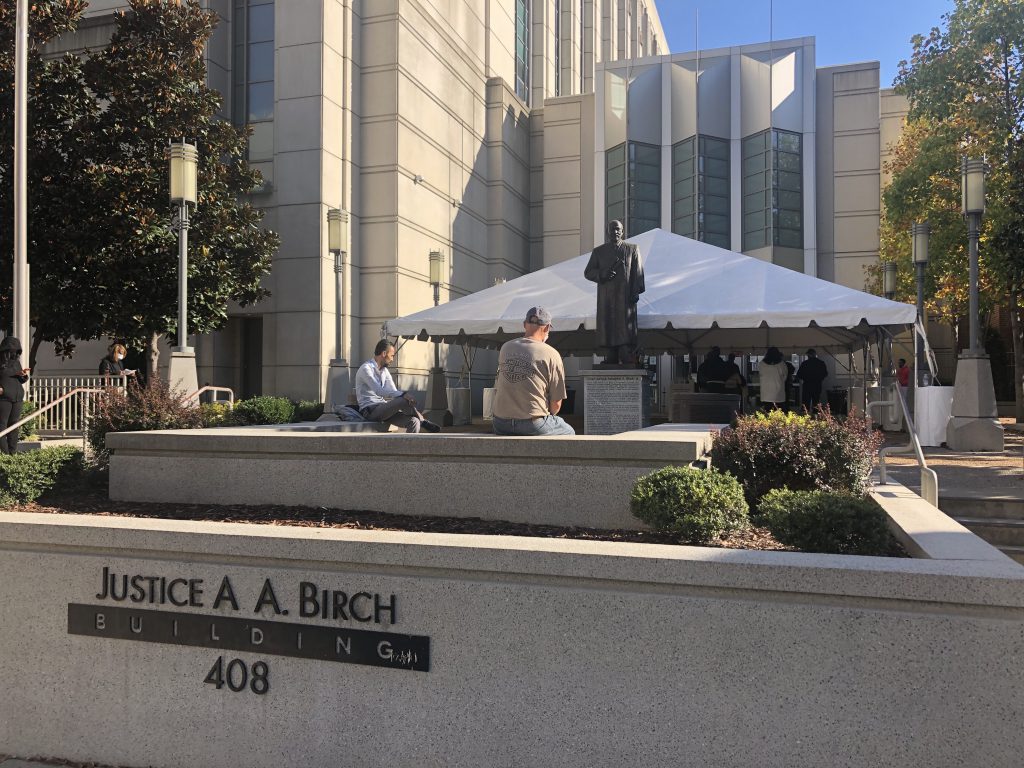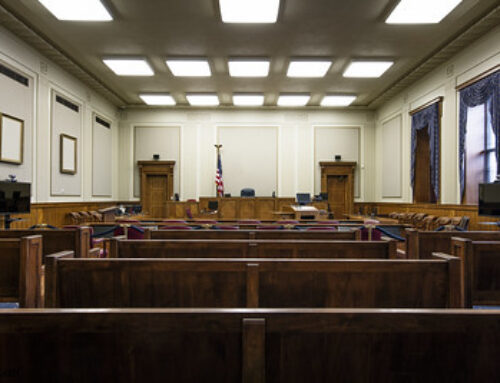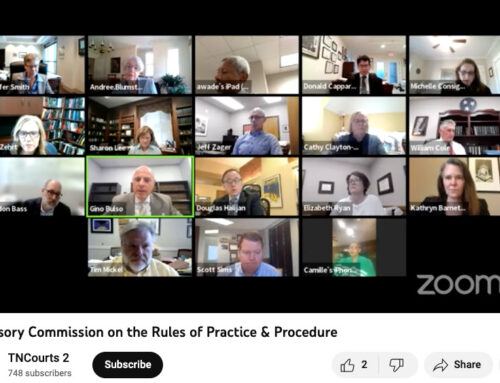
I arrived at the Justice A.A. Birch Building at about 8:15 a.m. this morning to see for myself what others have told me: Family members of people with court dates in General Sessions court are not allowed to accompany their loved ones into the building.
It took only a few minutes to witness someone being told by a security guard to wait outside where others like them already waited in the cool morning air.
There I found a grandmother who had intended to be a character witness for her grandson, a wife whose husband was there about a restraining order and a girlfriend of a man with a probation violating hearing.
All three had expected to go in. None had been informed in advance by an attorney or any other person that they would not be allowed in once they arrived. All said they would have been happy to watch the proceeding on video if it had been offered.
Katrina Mancilla, whose husband was there for a hearing, said she wanted to go in “so I know what they talk about, what the judge said.” She didn’t realize that she would be waiting outside the building.
Teri Campbell, there for her boyfriend, said she was also turned away by the security guards. There was no mention of watching the proceeding by any other way, such as by video.
Roberta Perkins was there for her grandson. Her daughter and husband were also there. Not one was allowed in. Perkins said she understood the restrictions because of COVID-19 and noted that she had risk factors and did not want to contract the disease.
As she waited outside, her daughter was on the phone.
“I would have liked to know what was going on,” Perkins said. “I was supposed to testify as a witness, as a character witness. If (the judge) asked who all is testifying, I could have put my hand up.”
After talking with the family members stuck outside, I got in line to see if I could go in. The security guard pointed a no-touch thermometer at my forehead. Clearing that, I was then simply asked if I had “something to do” in the courthouse. I answered yes, and the security guard waved me in. The guard didn’t make any other inquiry about my purpose in entering the courthouse.
I went through normal security, got my purse checked and took the elevator to the fifth floor where I went into a General Sessions court. It was well past 9 a.m. and the judge had not yet arrived. Several people sat on the benches inside the courtroom, generally about 5 or 6 feet apart. Everyone had on a mask.
There was a camera mounted high on the back wall, and another domed camera on the ceiling in the opposite corner. This looked like a typical security camera that you might see in a store. I could not tell if either camera was in use.
There were few people in the hallway.
Later, as I left the courthouse, I asked the same security guard who was stationed outside taking temperatures and had let me in if there was any exception to the “no-family-members inside” rule. He shook his head, no.
The people outside had changed. Some had left when their family member had come out of the building.
I later put in a call to the assistant court administrator to ask about using video cameras to allow family members or others in the public to view proceedings. I had seen a camera in a courtroom. Were cameras available? Were they operable? Was there information on the website about how to view proceedings? I could not find such information.
I was asked to submit my questions in writing, which I did. I hope to hear back soon.
But this thing is certain: Whatever “justice” took place inside the courtrooms of the Justice A.A. Birch Building this morning — and is taking place every day — it’s not public.
The courts have closed to some members of the public. And in this instance, they’ve been closed to people who have the most personal of all interests in viewing how justice is administered.




